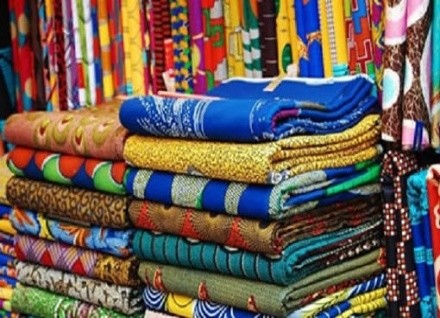Top African Fabrics

African fabrics have continued to gain more attention across several continents. People wear them with pleasure, and a lot of women take pride in wearing African print at occasions. African fabrics are bright-coloured, with idiosyncratic designs and hand-made patterns that support the rich cultural meaning.
African cloths are mostly used for special ceremonies like a family reunion, weddings and events. They are part of our cultural identity, and there are different fabrics from different countries.
They are as follows:
- Shweshwe from South Africa:
It is a printed, dyed cotton fabric used widely in traditional South African clothing. It is used traditionally for weddings and family functions and originally manufactured in three colours which are brown, blue and red. Now, it is produced in different colours, and the printing designs contain elaborate geometric designs.

- Baule from Cote d’Ivoire:
Baoule is made in five-inch wide strips of fabric. Then the strips are joined together to make the fabric. The cloth is thick and heavy. People wear this cloth with pride as it is part of the symbol of being African. Baoule can be used to design shoes, bags and dresses; African shirts for the men.

- Chitenge from Zambia
Chitenge or Kitenge is an East African, Central Africa and West African fabric that looks similar to a sarong. Women often wear this fabric around the chest or waist, over the head as scarf, or like a baby sling. Kitenges are like Kangas, which are African garments that are worn by a woman or a man.

- Kente from Ghana
It is a brightly coloured, inked material that has different patterns and designs that are produced in Ghana. The cloth is referred to as “nwentom” in the Akan – ethnic group of South Ghana. Kente is a kind of silk and cotton fabric that consists of interwoven cloth strips. Cote d’Ivoire has also adopted the fabric. Initially, it was produced in yellow and green; now, the material has many different colours and designs while retaining the Kente pattern.

- Ankara from Nigeria:
It is an African print and is widely known as Ankara in Nigeria. The pattern gained global recognition in 2010 but has existed for many years. It was originally produced by the Dutch for the Indonesian textile market. Nevertheless, it became popular in West African countries due to the tribal-like patterns. Ankara is formerly known as Dutch wax print by African Print Dutch Company vlisco.

African fabrics are a huge part of our culture. We need to embrace them and show them to the world.





